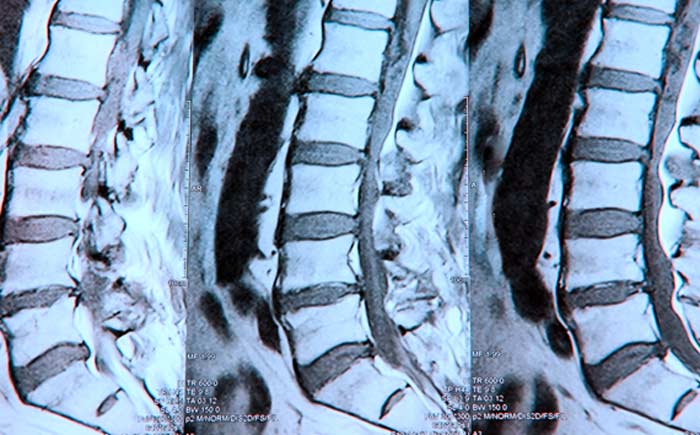
Most spinal injections can be recommended for either diagnostic or therapeutic reasons.
There are many options available when it comes to the specific type of injection that can be used. Most patients receiving spinal injections for treatment purposes also have a broader treatment plan that includes both active and passive forms of physical therapy.
The ultimate goal with injections used for this purpose is to improve mobility, flexibility, and overall quality of life by strengthening spine-supporting muscles and promoting successful healing and recovery.
How Spinal Injections Are Given
A local anesthetic is typically administered first to ease discomfort from the injection. When a spinal injection is given, a special type of live X-ray called a fluoroscopy is used to help with needle guidance. The placement of the medication is usually confirmed with dye (contrast material) that’s injected prior to the injection of the medication. As a safety precaution, medication isn’t administered until the dye shows that the correct flow pattern has been established.


Epidural Injections
Patients experiencing radiating nerve pain that starts in the lower back or neck area and extends to the legs, arms, or shoulders may be given an epidural injection. Delivered within the epidural space that’s just outside of a protective spinal cord membrane, these injections include an anesthetic and an anti-inflammatory medication that’s usually a corticosteroid. A diagnostic epidural injection may only have a sport-acting anesthetic medication, which lasts just long enough to determine if relief is experienced.
Facet Joint Injections
A facet joint injection is given around the spine’s tiny joints (facet joints). This type of spinal injection is used when it’s suspected that a patient’s symptoms are related to facet joint issues caused by wear (degeneration) or underlying conditions like spinal arthritis (osteoarthritis). If an anesthetic facet joint injection confirms a source or pain, a steroid medication may be immediately injected during the same session. A follow-up procedure known as radiofrequency ablation may be done to permanently block nerve signals with heat.
SI Joint Injections
Performed in a way that’s similar to what’s done with a facet joint injection, a sacroiliac (SI) joint injection is administered around the SI joints located in the lower back by the pelvic bones. Injections of this nature can be help make an accurate diagnosis since it’s usually one of the SI joints that’s the source of symptoms that typically affect one side of the lower body.
Discographies
A discography is a different type of spinal injection in that it has no therapeutic use. It’s intended to purposely trigger disc-related discomfort in order to identify the spinal disc that’s causing the experienced symptoms. During the procedure, a liquid is injected into the center of a disc to achieve this goal. Prior to injection, results from image tests and a description of a patient’s symptoms are used to determine which discs to inject in an attempt to make an accurate diagnosis.
For diagnostic purposes, discographies or epidural, facet joint, or SI joint injections may be recommended after image tests, nerve conduction studies, and an initial physical examination have narrowed down a likely source of pain that needs to be confirmed.
For therapeutic purposes, injections aren’t meant to be the first attempt at relief. It’s only when medication, PT, and other common treatment efforts aren’t effective that injections may be discussed. Risks associated with spinal injections are generally considered minor for most patients.
